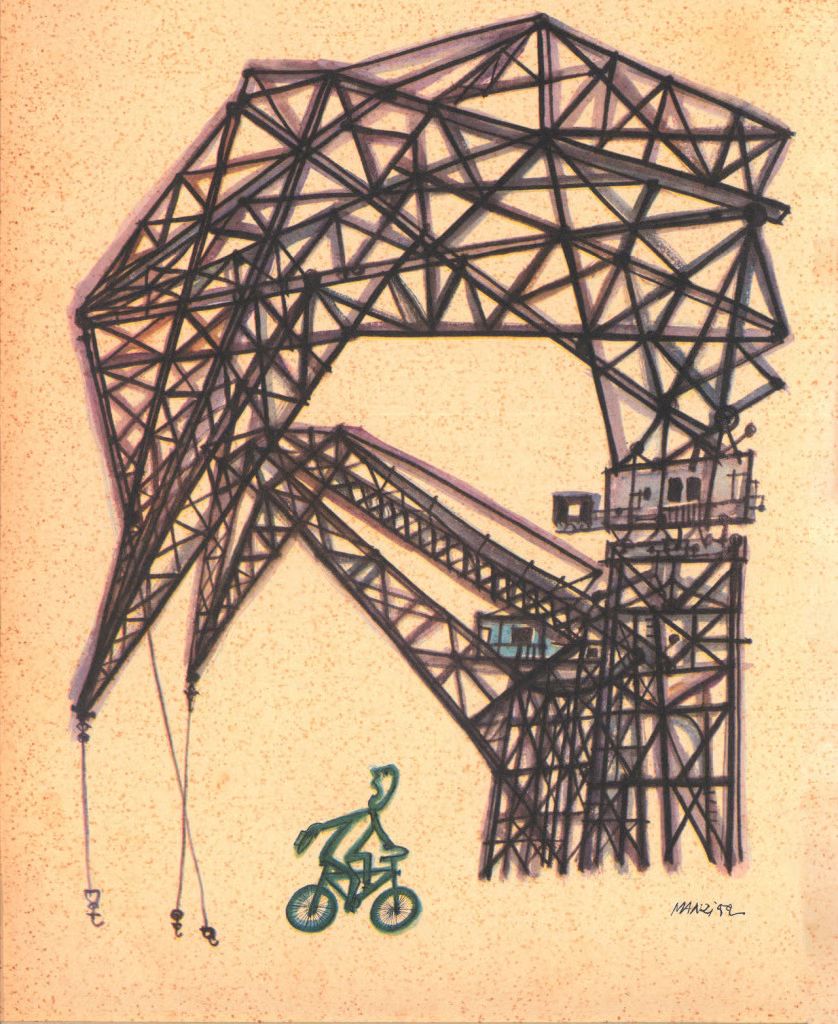Furor Mechanicus: Where Machines Dream
Leonardo Sinisgalli, the poet-engineer behind Civiltà delle Macchine (1953), believed that science and poetry could share the same rhythm—that a turbine could hold the beauty of a verse. Seventy years later, his vision revives at Future in Maastricht. In the Robot Lounge of Heerlen, Mark Schobben transforms sensors, light, and motion into a living dialogue between body and machine. Here, art and technology merge once more, and wonder—meraviglia—becomes the true engine of innovation.
TODAY'S HEADLINER
Stefano Aetherius
10/21/20252 min read


There was once a boy who dreamed of becoming a blacksmith. Instead, Leonardo Sinisgalli became a prominent engineer, studied mathematics alongside future Nobel Prize winners, and never abandoned poetry.
In 1953, he was given what seemed an impossible task: create a corporate magazine bringing together poets and engineers, artists and technicians. Civiltà delle Macchine (Civilization of Machines) was born, and with it an entirely new way of looking at technology. A year later, his commissioner wrote: "There is no publication like this one, where poets marvel at steam boilers and engineers delight in the mechanisms of old locks."
At the heart of his poetics was wonder. Sinisgalli invited everyone to rediscover that childlike capacity for amazement. A steam boiler could be as beautiful as a sunset. A perfect gear held the same harmony as a line of verse. "Science and poetry cannot walk separate paths," he wrote. He titled one collection Furor Mathematicus, wanting to show mathematics could have passion. Like Balla's Futurist paintings or his posters for Olivetti and Pirelli, Sinisgalli saw geometry and grace living side by side.
Seventy years later, Sinisgalli's vision comes alive at Future in Maastricht. Just as he invited poets like Ungaretti and Moravia to write about factories, Future today invites artists to engage with algorithms, sensors, and robotics. At the Robot Lounge in Heerlen, Mark Schobben has given contemporary form to that vision. His installation, developed during Future's First Steps Robotics workshop, creates an environment that listens and responds to human presence through sensor-activated cameras, screens, and projections.
As visitors move through the space, their gestures trigger subtle shifts: light ripples, projections shimmer, invisible boundaries pulse into life. The installation behaves like a living membrane, translating movement and emotion into light. The hypersensitive camera captures the smallest motion, converting it into chromatic frequencies that reveal the conversation between body and machine.
Future's "phigital" art—merging physical and digital—builds bridges between distant disciplines. AI, virtual reality, generative art, interactive robotics: these are today's steam boilers. Just as Sinisgalli taught us to marvel at gears, Future encourages wonder toward algorithms and their mechanisms. The workshop explored how systems can respond with empathy, how data shaped by artistic intention creates emotional resonance instead of distance.
This isn't about whether technology is good or bad. It's about choosing how we look at it: with fear, or with curiosity that transforms mechanics into poetry. Future creates spaces where wonder becomes method, where sensors become tools for emotional dialogue. Like Sinisgalli, Future forges ideas and builds bridges between worlds, proving that today's civilization holds its own poetry in how we perceive and design it.
At the Robot Lounge, as in Civiltà delle Macchine seventy years ago, technique becomes visible poetry. The lesson remains: wonder is the first step toward innovation.
© All right reserved Future Maastricht Museum 2025
